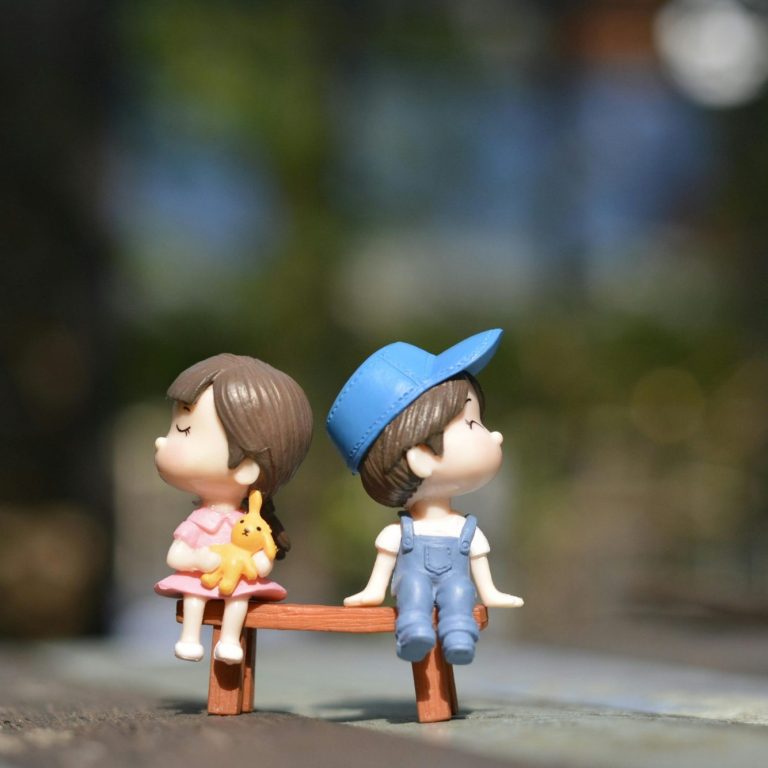Healing Childhood Wounds: A Comprehensive Exploration of Childhood Trauma
Childhood is meant to be a time of growth, safety, and nurturing. Yet, for millions of children, early experiences are marred by traumatic events that disrupt development and leave lasting scars. Childhood trauma can manifest in many forms, including neglect and abandonment, abuse, exposure to domestic violence, bullying, attachment disruptions, and the loss of a parent or caregiver. In this comprehensive guide, we delve into each type of childhood trauma, its impact on development, and pathways to healing.
Understanding Neglect and Abandonment: Neglect is the failure of caregivers to provide a child with adequate physical, emotional, or psychological support. Unlike other forms of trauma that involve overt acts of harm, neglect is characterized by omission—a child’s basic needs are consistently unmet.
The Impact of Abandonment
Abandonment can be both physical and emotional. When a caregiver is absent or unresponsive, children internalize feelings of worthlessness and develop a persistent fear of being left behind. These early experiences often shape self-esteem, future attachment styles, and even influence relationships into adulthood.
Long-Term Consequences
Children who experience neglect and abandonment may develop:
• Insecure or disorganized attachment styles
• Chronic low self-esteem and difficulties trusting others
• Emotional dysregulation, leading to depression or anxiety
• Academic struggles and social isolation
Pathways to Healing
Healing begins with recognizing the loss and its impact. Therapeutic approaches—such as attachment-based therapy, trauma-focused cognitive behavioral therapy (TF-CBT), and mindfulness—can help rebuild self-worth, promote healthy attachments, and develop coping strategies. Supportive relationships with other trusted adults are essential for restoring a sense of safety and belonging.
“Healing from neglect and abandonment is not about forgetting the past; it’s about learning to feel worthy of care now.”
Types of Abuse- Physical, Emotional, or Sexual Abuse:
Types of Abuse
• Physical Abuse: Involves deliberate infliction of bodily harm through hitting, beating, or other physical acts.
• Emotional Abuse: Involves patterns of behavior that damage a child’s sense of self-worth, such as constant criticism, rejection, and humiliation.
• Sexual Abuse: Involves any sexual activity forced upon a child, which they do not understand or consent to.
How Abuse Affects Development
Abuse disrupts a child’s sense of safety and trust. Physically abused children may have visible injuries, but the scars of emotional and sexual abuse often run deeper leading to lasting psychological effects. Abuse can distort a child’s understanding of relationships and body boundaries.
Long-Term Effects
Survivors may face:
• Post-Traumatic Stress Disorder (PTSD)
• Anxiety, depression, and other mood disorders
• Difficulties with intimacy and trust in relationships
• Increased risk for substance abuse and self-harm
Healing and Recovery
A trauma-focused approach is vital. Therapies like TF-CBT, EMDR (Eye Movement Desensitization and Reprocessing), and psychodynamic therapy help survivors process traumatic memories and reduce PTSD symptoms. Group therapy and peer support also provide a sense of validation and understanding.
“Surviving abuse means reclaiming your power over your past and choosing a path toward recovery and self-compassion.”
The Silent Trauma of Observation: Witnessing Domestic Violence- Children who witness domestic violence—even if they are not directly abused—experience a deep sense of insecurity. The conflict between caregivers can create an unpredictable environment where safety is constantly in question.
Emotional and Psychological Effects: Witnessing violence can lead to:
• Chronic anxiety and hypervigilance
• Emotional numbness and difficulty expressing feelings
• Aggressive behaviors or internalized guilt
• Impaired social and academic functioning
Breaking the Cycle
Early intervention is crucial. Therapeutic programs focusing on emotion regulation and conflict resolution can help children learn healthier ways to process their experiences. Schools and community programs that teach coping skills and provide safe spaces for discussion are also vital..
Bullying as Trauma- Bullying is more than just teasing—it is a systematic and repeated form of abuse that targets a child’s sense of self. Peer rejection can reinforce feelings of isolation and inadequacy.
The Impact on Self-Identity
Children who are bullied may develop:
• Social anxiety and low self-esteem
• Fear of rejection that persists into adult relationships
• Behavioral problems, such as aggression or withdrawal
• Academic difficulties due to lack of concentration and focus
Strategies for Recovery
Resilience-building interventions and social skills training can empower children to develop healthier peer relationships. Counseling, especially group therapy, provides a safe space to share experiences and rebuild confidence. Schools can implement anti-bullying programs and promote inclusive environments to reduce peer rejection.
“Bullying wounds the heart as much as it harms the body. Recovery is about rediscovering your value and learning to trust in the kindness of others.”
The Importance of Secure Attachment- Attachment theory emphasizes the critical role of early bonds between children and caregivers. When these bonds are disrupted by trauma, children may struggle to develop secure attachments later in life.
Manifestations of Attachment Trauma
Children with attachment issues often display:
• Fear of intimacy and difficulty trusting others
• Anxious or avoidant behaviors in relationships
• Emotional volatility and difficulties regulating feelings
• Challenges in forming meaningful relationships both in childhood and adulthood
Healing Through Relationships
Therapeutic interventions that focus on building or repairing attachment relationships—such as attachment-based family therapy—can be transformative. Mentorship programs and supportive relationships with other adults can help re-establish trust and secure attachments, which in turn foster resilience and emotional well-being.
“When the first bonds are broken, it takes time and care to rebuild the trust that forms the foundation of healthy relationships.
The Profound Impact of Loss: Loss of a Parent or Caregiver- Losing a parent or primary caregiver is one of the most devastating experiences a child can endure. Whether through death, separation, or abandonment, the loss creates a void that can affect every aspect of a child’s development.
Grief and Long-Term Consequences
The loss of a caregiver can lead to:
• Deep, unresolved grief that may evolve into depression or anxiety
• Feelings of abandonment and insecurity
• Difficulty in forming stable relationships
• Academic and behavioral challenges, as children struggle to cope with their grief
Pathways to Healing
Supportive counseling, grief therapy, and family therapy are critical in helping children process their loss. Creating a stable, nurturing environment and providing opportunities for memorializing the lost caregiver can help integrate the loss into a coherent life narrative. Peer support groups and community programs are also valuable in fostering resilience.
“The loss of a parent is a wound that can never fully heal, but with compassionate support and time, a child can learn to carry that loss with strength rather than despair.
Moving Toward Healing
Childhood trauma—whether from neglect, abuse, witnessing violence, or losing a loved one—affects every aspect of a child’s development. While the effects can be profound and long-lasting, healing is possible.
Here are some essential steps on the journey to recovery:
1. Acknowledge the Trauma- Recognize that what happened was traumatic. Healing begins with validation—understanding that the pain is real and that it has lasting impacts.
2. Seek Professional Help- Therapists, counselors, and support groups specializing in childhood trauma can provide the necessary tools to navigate recovery. Approaches like trauma-focused CBT, EMDR, and attachment-based therapies are proven to help process trauma.
3. Build Supportive Relationships- Recovery is not a solitary journey. Safe and supportive relationships—with family, friends, or mentors—can provide the security needed to rebuild trust and self-worth.
4. Develop Coping Skills- Learning how to regulate emotions, manage stress, and set healthy boundaries is vital. Mindfulness, creative expression, and physical activity can all be part of a holistic healing plan.
5. Foster Resilience- Resilience is not an inherent trait; it can be nurtured. Focus on strengths, develop a supportive community, and celebrate progress, no matter how small.
“Your past does not define your future. With understanding, support, and the right strategies, you can overcome the pain of childhood trauma and create a path to a healthier, more fulfilling life.”
Final Thoughts
Childhood trauma is a complex and multifaceted issue. Whether it stems from neglect, abuse, witnessing violence, bullying, disrupted attachments, or the loss of a caregiver, its effects can ripple through every area of life. However, healing is a journey that begins with acknowledging the pain, seeking help, and building a network of supportive relationships. Through specialized therapies, resilience-building, and trauma-informed care, survivors can reclaim their lives and transform their wounds into sources of strength.
If you or someone you know is affected by childhood trauma, remember that you are not alone. Reach out for help and take the first step toward healing today.
Citations:
(Emotional Neglect and Attachment Issues – Verywell Mind)
(Community Violence and Domestic Violence – CDC/NCBI)
(Loss of Parent/Caregiver – Wikipedia: Child Abuse)
(Physical, Emotional, and Sexual Abuse – Verywell Mind)
(Bullying and Peer Rejection – Self.com)
(Attachment Trauma – Verywell Mind)

We need your consent to load the translations
We use a third-party service to translate the website content that may collect data about your activity. Please review the details in the privacy policy and accept the service to view the translations.

